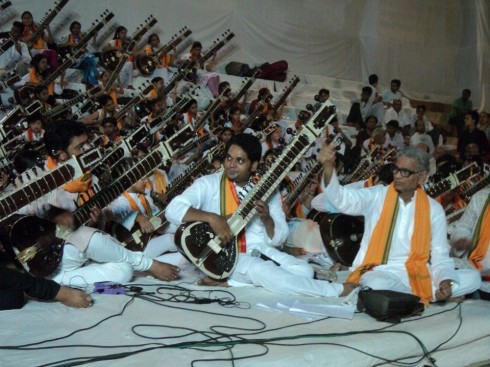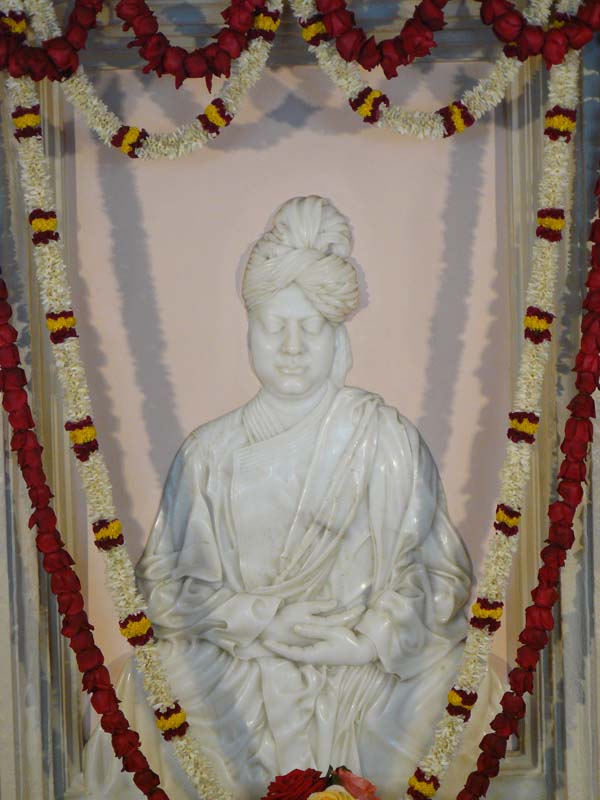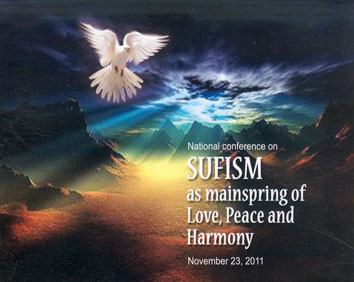Sanskrit

Mishras 2012 Europen Musical tour
Dear Friends,
We are in Varanasi now and wish all of you. We are happy to inform you that our tour for Europe this year will be in October/ November 2012. So we are starting now for booking the Concert dates of Europe and just like to inform you that if you want to book any concert of us then please contact us soon as now we are booking the dates.
We are coming three musician Pandit Shivnath Mishra, myself Deobrat Mishra on Sitar and Prashant Mishra on Tabla. So please contact us soon for any information you need.
Hope to hear from you soon.
Yours, Deobrat Mishra
Sitar Artist.
Contact us at: mishramusic@hotmail.com
Website: www.music-of-benares.com
Cell: 0091-9451586700
Note: we are also sending you a attachment of recent concert photos and Video Link on youtube we did with 108 Sitar players in Varanasi to save holy River Ganges. Please have a look. You can see more picture of it on my facebook account: Deobrat Mishra
My father Pandit. Shivnath Mishra made a history in Varanasi-India to conduct a orchestra of 108 sitar players. Total musician where 151 including Tabla players and Flute players.
Varanasi (Sanskrit: वाराणसी ) is a city situated on the banks of the River Ganges in the Indian state of Uttar Pradesh, 320 kilometres (199 mi) southeast of state capital Lucknow. It is regarded as a holy city by Buddhists and Jains, and is the holiest place in the world in Hinduism (and center of earth in Hindu Cosmology). It is one of the oldest continuously inhabited cities in the world and probably the oldest of India. The Kashi Naresh (Maharaja of Kashi) is the chief cultural patron of Varanasi and an essential part of all religious celebrations.The culture of Varanasi is closely associated with the River Ganges and the river’s religious importance. The city has been a cultural and religious centre in North India for several thousand years.
The Benares Gharana form of Indian classical music developed in Varanasi, and many prominent Indian philosophers, poets, writers, and musicians resided or reside in Varanasi, including Kabir, Ravidas Their Guru Swami Ramanand, Trailanga Swami, Munshi Premchand, Jaishankar Prasad, Acharya Shukla, Ravi Shankar, Girija Devi, Hariprasad Chaurasia, and Bismillah Khan. Tulsidas wrote Ramacharitamanas here, and Gautama Buddha gave his first sermon at Sarnath located near Varanasi (Kashi). Varanasi is home to four universities: Banaras Hindu University, Mahatma Gandhi Kashi Vidyapeeth, Central Institute of Higher Tibetan Studies and Sampurnanand Sanskrit University. Residents mainly speak Hindi and Kashika Bhojpuri, which is closely related to the Hindi language. People often refer to Varanasi as “the city of temples”, “the holy city of India”, “the religious capital of India”, “the city of lights”, and “the city of learning.”
Mishras Press release:
Very rare to see three generation master musician’s on same stage.
11th GENERATION FATHER AND SON SITAR MASTERS of Benares Gharana
From their home city of Benares, an ancient spiritual centre of traditional music and Indian culture, “The Mishras” are bringing classical North Indian Ragas and meditative music to the world audience, gifting the audience with a fabulous performance and a spiritual experience. Join this father and son duet of two of the worlds finest Sitar Artist and Prashant Mishra on Tabla grandson of Pandit Shivnath Mishra as they inspire one another to new levels of loving interplay.
PANDIT SHIVNATH MISHRA
Pandit Shivnath Mishra was born on the 12th of October 1943, in Varanasi (North India). Also known as “Legend of the Sitar”, he is the 10th generation of the prominent Benares Gharana lineage of top class singers including Pandit Bade Ramdas Mishra and Panditji Great Grand Father. Since childhood, his highly musical family could see signs of a masterful musician in him. When Panditji was five years old, he began studying vocal music with his father, Badri Prashad Mishra, and his uncle-guru, Pandit Mahadev Prashad Mishra. However, when he was eight his musical inclination led him to study the sitar. In a family of great classical Indian vocalists, he was the first one who mastered the sitar.
Due to the vocal influence from his family as well as the Benares Gharana tradition, he is one among few artists in Contemporary India who ‘sing inside’ while playing a musical instrument. His lively, powerful and unique style has praised him with innumerous titles by the most representative authorities and institutions of music in and outside India. In 1966, when he was only twenty-three, he received a gold medal in the All India Music Conference, in Calcutta.
1979 marks the beginning of his performances abroad. Sine then, he has been constantly on tour in many foreign countries, among them Germany, Italy, France, Luxembourg, Switzerland, Austria, Japan, Holland etc. In 1999, he gave his first concert in the USA and Canada. During his tours, he has performed with several international jazz artists such as John Handy, Paul Horn, David Freezen, Ben Conrad, Berred Kworrase, George Figgler Aimester among others. Moreover, he participated in many conferences and recitals including the Condolence Metal of Late Prime Minister Mrs. Indira Gandhi, in Germany. He also took part in programs broadcast by the BBC Television and the German Radio.
Being one of India’s premiere sitar artists of all times, Pandit Shivnath Mishra was the Head of the Music Department at the Sampurnanand Sanskrit University of Benares, in Varanasi, for 36 years. At this time, in 1994, he formed the “Music of Benares” which consists of a group of North Indian (Hindustani) classical musicians whose aim is to familiarize audiences all over the world with Hindustani music in general and the Benares Gharana in particular. What is characteristic of the Benares Gharana is exactly the singing of the Thumri, a light Indian classical music that is highly ornamental and thus very emotional and expressive. At a time when many different Gharanas mix with each other, the “Music of Benares” group keeps this ancient tradition alive.
Incorporation of this style with the “Jugalbandi” presentation, in which there are two solo artists sharing the stage, has created a unique synthesis of classical and folk that appeals to audiences everywhere. But this is not just Jugalbandi, this is a duet between a Guru and his Shishya (disciple) and, in this case, between father and son. Seeing this special interaction on stage is no doubt an unforgettable and mesmerizing experience.
Deobrat Mishra – biography
Deobrat Mishra is no doubt one of the most energetic and innovative sitar artists of India. Selectivity, melody and rhythmic complexity are typical features in his lively playing style.
Born in 1976, he represents the 11th generation of the Benares Gharana tradition. As a young child he studied tabla with his mother, Pramila Mishra, who is the granddaughter of the well-known tabla player Pandit Baiju Mishra. He started by studying vocal music with his father at the age of five and began his sitar lessons a year later. That same year, after only six months of studying the sitar, he gave his first public performance on stage. Five years later, he performed for the first time on the All India Radio.
Since 1994 he has been touring throughout Europe with his father. In the same year he was chosen to receive the award of the best young sitar player of India. In 2000 he received the “Jewels of Sound Award” in Mumbai. His many projects include music workshops, solo performances for radio and television as well as world music programs with Indian and European artists. Moreover, he is the one in charge of cultural events and music lessons provided by the Academy of Indian Classical Music, the school he founded along with his father, Pandit Shivnath Mishra, in 2006.
Recently, he received a Masters degree in sitar from the Prayag Sangit Samiti in Allahabad. Among many other projects, the Mishras performed and recorded their music with the Western Symphony Orchestra of Italy in 2005. Nowadays, they fully dedicate their art to similar projects including annual tours around the world.
Above all, the Mishras (father and son) serve as two of India’s leading cultural ambassadors of our times
Prashant Mishra is one of the best young Tabla player of benares music tradition. When he was five he started to learn tabla with the family member of Biru Mishra of Varanasi also studying Tabla presently with Mr.Chakkan lal Mishra(Student of Great Tabla player Anokhelal Mishra..
Soon after few years of hard practice with his grandfather Pandit Shivanath mishra and uncle Deobrat mishra he was able to perform with Mishras His skills beautifully compliment and support the Mishras in their concerts.
http://timesofindia.indiatimes.com/topic/Aviral-and-nirmal-flow-of-the-Ganga/news
In 2004 he won first prize in Tabla competition organized by Sangeet Natak Academy Uttar Pradesh India. He received many awards for his tabla playing at many different places. The Mishras tour will help to support the Academy Of Indian Classical Music School in Varanasi, India.
Additionally, the Mishras support their Academy of Music in Benares, India where they keep alive the tradition of their music amongst young musicians. Every January and February, the Academy is open to international students of all ages and skill levels. These study tours to India are a cultural experience combining ashram style living and intensive music instruction in one of the world’s oldest cities.
Visit: www.benaresmusicacademy.co
For more information, contact Deobrat Mishra: mishramusic@hotmail.com
Visit our website: www.music-of-benares.com
http://www.gangaaction.com/
http://
http://
#Previous #articles #videos #benares #gharana
#Previous #articles #save #ganga #water #humanrights
Note: Mishra or Misra (Hindi: „मिश्र“ „मिश्रा“) is a Hindu Brahmin surname found mostly in the northern and central parts of India. It is one of the most widespread Brahmin surnames in the fertile Gangetic plain region and in the Indian states of Delhi, Bihar, Uttar Pradesh, Uttarakhand, Madhya Pradesh, Rajasthan, Orissa, Assam and West Bengal. It is also found in countries such as Guyana and Trinidad and Tobago under the anglicized version of Misir, due to migration owing to agricultural/plantation employment. The surname is also found in Nepal, Fiji and Mauritius, as well as in other Indian diaspora communities.
In Hinduism, Brahmin refers to the class of educators and preachers. It is the highest class in the caste system. There are many references in the Ramayana and Mahabharata about the importance of a Brahmin. In the Vedic period, the Brahmins preferred isolation and solely dedicated their life to propagating knowledge and Dharma. However Misras have historically been martial Brahmins and in earlier years, many were drafted into the army.
SWAMI VIVEKANANDA’S BIRTHDAY CELEBRATION : Live Webcast
http://www.belurmath.org/news_archives/swami-vivekanandas-birthday-celebration-live-webcast/
http://www.belurmath.org/news_archives/2012/01/10/national-youth-day-12-january-2/
Previous #articles #videos # development #reliefwork
http://ramakrishna.org Ramakrishna – Vivekananda Center of New York
http://en.wikipedia.org/wiki/Vedanta

NATIONAL CONFERENCE ON „SUFISM“
Conference on Sufism „as mainspring of Love, Peace and Harmony“
Opening Date: Wednesday, 23 November 2011
Closing Date: –
Additional Information : at 3.00 p.m at Lok Virsa Islamabad
The Gilgit Agency was a political unit of British India, which administered the northern half of the Princely state of Jammu and Kashmir. The Gilgit Agency was created in 1877 and was overseen by a political agent of the Governor-General of British India. The seat of the agent was Srinagar. In 1935, the Gilgit Agency leased the territory comprising the agency from the Maharaja of Jammu and Kashmir, Hari Singh, for a period of sixty years. This lease and the Gilgit Agency ceased to exist when Pakistan and India became independent countries in 1947. HERE
LOK VIRSA – AN INTRODUCTION :
Lok Virsa (The National Institute of Folk & Traditional Heritage) works towards creating an awareness of cultural legacy by collecting, documenting, disseminating and projecting folk & traditional heritage. Surveys and documentation of traditional culture is central to the objectives of the institute. The Lok Virsa delve into and surveys are conducting by mobile recording and filming units. Dedicated individuals undergo the rigorous field work, to bring back valuable results to the central archives and production facilities housed at the Lok Virsa complex at Garden Avenue Shakarparian Hills Islamabad.
Lok Virsa is an affiliate member of UNESCO, The World Craft Council, International Council of Music, The Asian Cultural Centre for UNESCO, The International Council of Museums and similar other world organizations for the dissemination of art products abroad.
http://www.rferl.org/section/Pakistan
http://www.facebook.com/Gilgit Baltistan
http://www.facebook.com/kashmirsufismsociety
http://www.facebook.com/pakistanyouthforumpage
http://hunzalandslide.blogspot.com/
http://www.facebook.com/Indian Youth Climate Network(IYCN)
http://de.wikipedia.org/Hunza Burusho people, Hunza-Mythos
http://en.wikipedia.org/Former State of Hunza (princely state)
http://www.facebook.com/International Organization of Folk Art (IOV)
https://www.facebook.com/unesco Educational, Scientific and Cultural Organization (UNESCO)
Zamana is a public interest space for learning, reflection, and action on Pakistan.
Explore: Whose Land? Whose Food?
In its first issue, Zamana delves into the thorny subject of land and food rights in Pakistan. The focus is prompted by recent news reports that amidst rising hunger and food crises, the Government of Pakistan plans to give away thousands of acres of farmland to Saudi Arabia and other foreign investors. Zamana invites more commentaries on this issue. Please send your perspective to info @ zamana.org. Further Infos: http://farmlandgrab.org/
Act: Our Land, Our Food, Pakistan is not for Sale
Sign the petition to raise your voice against land leasing to foreign clients.
UPDATE 23.11.2011 Final Declaration: Stop Land-Grabbing Now!
The Oakland Institute http://www.oaklandinstitute.org
More than a hundred civil society organizations have submitted a document entitled „Time to Act – Agriculture and Food Security and Rio+20“ as input to the UN Conference on Sustainable Development (the Rio+20 conference). The submission outlines the key actions that are needed to achieve viable food systems based on agroecological and other forms of sustainable production.
http://www.facebook.com/oak.institute
http://www.ourworldisnotforsale.org/members
http://www.facebook.com/road2rio20
A global youth mobilization towards the UN Conference on Sustainable Development (Rio+20).
http://www.timetoactrio20.org/ 20 years after the Rio Earth Summit, the planet is in a deeper environmental, energy and financial crisis.The United Nations Conference on Sustainable Development (UNCSD) in Rio de Janeiro in 2012 might be just another high-level conference stating the need to eradicate hunger and poverty, stop climate change, the loss of biodiversity, soil erosion and other serious environmental problems – and then, after the conference, life goes on as before. But it can be different. It has a historical opportunity to make important decisions and agree on actions that actually do eradicate hunger and poverty, and save the environment. It’s time to act!
Many civil society organizations have signed on to a document with proposals on issues linked to food and agriculture for the Rio2012-conference. Download the document (PDF) HERE. Download the document in Word format (doc) HERE.
If you have comments and suggestions for changes in this document, and if your organization wants to support the document, please send a mail to rio2012agcso@gmail.com
The document is available in English, Spanish, French and German
UPDATE 24.11.2011 @guardian – Africa’s great ‚water grab‘ Foreign investors aren’t just after land in Africa. Access to water is essential – which can bring them into direct competition with the needs of local communities.
This article is about a right to water as a human right under international law. For a discussion of water usage laws in common law, see Water right. http://en.wikipedia.org/wiki/Right_to_water
WORLD CONFERENCE ON HUMAN RIGHTS
Vienna, 14-25 June 1993
VIENNA DECLARATION AND PROGRAMME OF ACTION
Note by the secretariat
Attached is the text of the Vienna Declaration and Programme of Action, as adopted by the World Conference on Human Rights on 25 June 1993.
1. The World Conference on Human Rights reaffirms the solemn commitment of all States to fulfil their obligations to promote universal respect for, and observance and protection of, all human rights and fundamental freedoms for all in accordance with the Charter of the United Nations, other instruments relating to human rights, and international law. The universal nature of these rights and freedoms is beyond question.
… Emphasizing that the Universal Declaration of Human Rights, which constitutes a common standard of achievement for all peoples and all nations, is the source of inspiration and has been the basis for the United Nations in making advances in standard setting as contained in the existing international human rights instruments, in particular the International Covenant on Civil and Political Rights and the International Covenant on Economic, Social and Cultural Rights…
http://www.unhchr.ch/huridocda/huridoca.nsf/%28symbol%29/a.conf.157.23.en
http://www.amnesty.org/en/economic-social-and-cultural-rights #video
Sufi Music Of Kashmir (Sufiyana Mousiqui)Part 1
Ghulam Mohamad Saznawaz is the only existing master of Kashmiri Sufiyana Music in the world. The most tragic part of Kashmiri sufiyana music is that with the Maestro Ghulam Mohamad Saznawaz the art will be lost to posterity, now very old with his age the mastero has opened a school to teach Kashmiri Sufiyana Music free of charge but this school does not attract many students from Kashmir because of the religious and social prejudice among the majority of Kashmiris. This is sad but its true that still musicians are considered as of a lower class or of low moral and as if they can not do something useful thats why they chose to be musician.
http://saznawazgharana.blogspot.com/
http://www.facebook.com/SuFiYaNa MuSiQuI Of KaShMiR
With the goal of uniting conservation, communities and sustainable travel, TIES is committed to promoting the principles of ecotourism and responsible travel around the world.
http:// www.disappearancesinkashmir.com/
http://www.hrw.org/legacy/reports/1999/kashmir/
Mountain Minorities and Indigenous Peoples

NGO Development Projects Active in Tibet
About ICIMOD – The International Centre for Integrated Mountain Development, ICIMOD, is a regional knowledge development and learning centre serving the eight regional member countries of the Hindu Kush-Himalayas – Afghanistan, Bangladesh, Bhutan, China, India, Myanmar, Nepal, and Pakistan – and based in Kathmandu, Nepal.
Globalisation and climate change have an increasing influence on the stability of fragile mountain ecosystems and the livelihoods of mountain people. ICIMOD aims to assist mountain people to understand these changes, adapt to them, and make the most of new opportunities, while addressing upstream-downstream issues. We support regional transboundary programmes through partnership with regional partner institutions, facilitate the exchange of experience, and serve as a regional knowledge hub. We strengthen networking among regional and global centres of excellence. Overall, we are working to develop an economically and environmentally sound mountain ecosystem to improve the living standards of mountain populations and to sustain vital ecosystem services for the billions of people living downstream – now, and for the future.
International Mountain Day, celebrated on December 11, gives us an opportunity to reflect on the relevance of mountains for the world. This year the International Mountain Day theme focuses on indigenous peoples and other minorities living in the mountains. The purpose is both to highlight the threats and challenges faced by these communities, and to acknowledge the invaluable knowledge they have and the contributions they can make towards overcoming global challenges of poverty and loss of diversity in a rapidly changing world.
A majority of the world’s indigenous women and men live in mountain regions, many on the margins of society and facing poverty and exclusion. The Hindu Kush-Himalayan region has some of the highest diversity of indigenous peoples and other minorities in the world. An ICIMOD report identified more than 600 living languages in the Himalayas, 400 spoken by less than 100,000 people. According to current forecasts, ninety per cent of all languages could disappear within 100 years. The loss of these languages not only erodes an essential component of a group’s identity, it is also a loss to heritage for all humankind.
The UN General Assembly adopted the UN Declaration on the Rights of Indigenous Peoples in September 2007, marking an important step in international efforts to preserve the identity of indigenous peoples. However, implementation has a different speed and different levels of commitment in different countries.
In agricultural terms, mountains are often considered ‘marginal lands’, unsuitable for modern commercial farming which focuses on cultivation of single crop varieties for large markets. Indigenous mountain people and other mountain communities continue to use traditional practices and techniques including sophisticated terracing systems, water transportation and irrigation schemes, and a combination of pasture, forestry and farming practices. Indigenous women and men serve as custodians of this traditional knowledge on how to farm under difficult mountain conditions, and how to conserve important reservoirs of agricultural biodiversity.
They sustainably farm a wide variety of crops that are adapted to a range of different elevations, slope conditions, and micro-climates, and this knowledge will be of great, if as yet little noticed, value in the world’s efforts to adapt to climate and other drivers of change. The autonomous adaptation practiced by mountain communities consists of community-based interventions that address underlying causes of vulnerability and reduce the risk of possible adverse impacts of climate change by building upon the existing rich indigenous knowledge base on adaptation to environmental change and helping to strengthen the resilience of the communities. Women especially play a critical role in gendered indigenous knowledge. Their roles and expertise have yet to be acknowledged, but has great potential for adapting to multiple drivers of change.
Indigenous mountain communities are connected to the land, the environment, and natural resources in ways that are often inextricably intertwined and therefore expressed in spiritual and socio-cultural terms. Respecting this worldview, and preserving the languages, music, artwork, folk tales, culture, meanings, and myths that express it, is critical for the survival of indigenous communities in mountain areas. This ‘intangible heritage’ also enriches the global community, providing inspiration and insights for realising a more sustainable relationship between humankind and the environment.
A scene from Tibetan Documentary „Leaving Fear Behind,“ shows a nomad school in Tibet (Amdo) working to preserve Tibetan Language and culture as it’s very existence is under threat from Chinese Government policies. Find out more: http://studentsforafreetibet.org Leaving Fear Behind: The Film the Chinese Government Doesn’t Want the World to See. // sumit sadhak practicing handstand in himalyas on the bank of ganga river one of the most important places for yogis.
The involvement of indigenous mountain communities is an important prerequisite for sustainable mountain development. Therefore, as governments work toward addressing mountain development priorities, it is critical that they live up to their commitments outlined in the UN Declaration on the Rights of Indigenous Peoples.
We hope that this year’s International Mountain Day will help to increase awareness of the central role of Minorities and Indigenous Peoples for mountain development, and to motivate all citizens, policy makers, and development actors to recognise the importance of their contribution to sustainable development. We trust that the Day will encourage organisations to invite indigenous and traditional mountain communities to participate actively in national and international efforts to understand and adapt to the multiple drivers of change, including climate change, in the mountains of the world.
With best wishes, Andreas Schild http://www.icimod.org
Culture and Development – Placing culture at the heart of development policy constitutes an essential investment in the world’s future and a pre-condition to successful globalization processes that take into account the principles of cultural diversity. It is UNESCO’s mission to remind all States of this major issue.
As demonstrated by the failure of certain projects underway since the 1970s, development is not synonymous with economic growth alone. It is a means to achieve a more satisfactory intellectual, emotional, moral and spiritual existence. As such, development is inseparable from culture. Strengthening the contribution of culture to sustainable development is a goal that was launched in connection with the World Decade for Cultural Development (1988-1998). Ever since, progress has been made thanks to a corpus of standard-setting instruments and demonstration tools such as cultural statistics, inventories, regional and national mapping of cultural resources.
In this regard, the major challenge is to convince political decision-makers and local, national and international social actors to integrating the principles of cultural diversity and the values of cultural pluralism into all public policies, mechanisms and practices, particularly through public/private partnerships.
This strategy will aim, on the one hand, at incorporating culture into all development policies, be they related to education, science, communication, health, environment or tourism and, on the other hand, at supporting the development of the cultural sector through creative industries. By contributing in this way to poverty alleviation, culture offers important benefits in terms of social cohesion. Read more: http://portal.unesco.org/culture/en
The Challenge of Human Rights and Cultural Diversity – United Nations Background Note by Diana Ayton-Shenker:
The end of the cold war has created a series of tentative attempts to define „a new world order“. So far, the only certainty is that the international community has entered a period of tremendous global transition that, at least for the time being, has created more social problems than solutions.
The end of super-power rivalry, and the growing North/South disparity in wealth and access to resources, coincide with an alarming increase in violence, poverty and unemployment, homelessness, displaced persons and the erosion of environmental stability. The world has also witnessed one of the most severe global economic recessions since the Great Depression of the 1930s.
At the same time, previously isolated peoples are being brought together voluntarily and involuntarily by the increasing integration of markets, the emergence of new regional political alliances, and remarkable advances in telecommunications, biotechnology and transportation that have prompted unprecedented demographic shifts.
The resulting confluence of peoples and cultures is an increasingly global, multicultural world brimming with tension, confusion and conflict in the process of its adjustment to pluralism. There is an understandable urge to return to old conventions, traditional cultures, fundamental values, and the familiar, seemingly secure, sense of one’s identity. Without a secure sense of identity amidst the turmoil of transition, people may resort to isolationism, ethnocentricism and intolerance.
This climate of change and acute vulnerability raises new challenges to our ongoing pursuit of universal human rights. How can human rights be reconciled with the clash of cultures that has come to characterize our time? Cultural background is one of the primary sources of identity. It is the source for a great deal of self-definition, expression, and sense of group belonging. As cultures interact and intermix, cultural identities change. This process can be enriching, but disorienting. The current insecurity of cultural identity reflects fundamental changes in how we define and express who we are today. Read More: * HERE*

Build Hope – Sivananda Sevashram
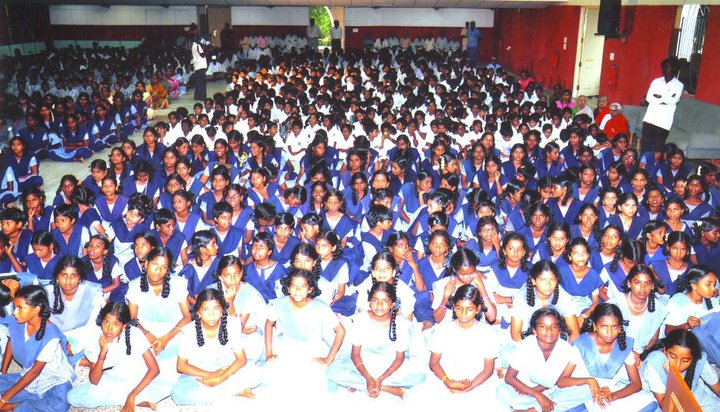
SERVE, LOVE, GIVE, PURIFY, MEDITATE, REALISE. So Says Sri Swami Sivananda Saraswati Maharaj
Swami Sivananda Saraswati (September 8, 1887—July 14, 1963) was a Hindu spiritual teacher and a well known proponent of Yoga and Vedanta. Sivananda was born Kuppuswami in Pattamadai, in the Tirunelveli district of Tamil Nadu. He studied medicine and served in Malaya as a physician for several years before taking up monasticism. He lived most of the later part of his life near Muni Ki Reti, Rishikesh. He is the founder of The Divine Life Society (1936), Yoga-Vedanta Forest Academy (1948) and author of over 200 books on yoga, vedanta and a variety of other subjects. He established Sivananda Ashram, the location of the headquarters of The Divine Life Society (DLS), on the bank of the Ganges at Shivanandanagar, at a distance of 3 kilometres from Rishikesh.
Sivananda Yoga, the yoga form propagated by him, are now spread in many parts of the world through Sivananda Yoga Vedanta Centres, but these centres are not affiliated with Swami Sivananda’s original ashrams which are run by the Divine Life Society. Read More: > HERE <
His Holiness Swami Sivananda was born in Pathamadai in Thirunelveli district, South India. Ever since his childhood, His Holiness was totally devoted to serving others. He worked very hard and graduated in Medicine. As a doctor he earned money but could not obtain peace of mind. He realized that earning a lot of money does not mean earning peace and happiness. Instead, spiritualism alone can help one attain MUKTHI or MOKSHA. His mind was in search of peace and was in a quest for the ultimate purpose of being born in this world. He felt that everyone must have a goal in life and one must lead one’s life with purpose and meaning.
Swami Sivananda proceeded to Rishikesh in North India, where he realized his goal while sitting on the banks of Ganges. He advocated non-violence, truth and worship. Many were impressed by his simplicity and teachings. He gathered a lot of followers and in due course, a mission was started in a small hut which today proudly stands as SWAMI SIVANANDA SARASWATHI SEVASHRAM at Rishikesh. His teachings were simple and he saw God as Omnipotent. He advocated the principle that „ONE CAN FIND GOD IN HIS/HER OWN HEART BY BEING HONEST AND LEADING A SIMPLE LIFE“. He believed the teachings of the Quran, Bhagavath Gita and Bible to be the same. He also believed that there was no need for one to go in search of God, as one can find God in their own hearts by not being selfish, but by making sacrifices for others. Many devotees all around the world were fascinated by his teachings and started several missions in Yoga, Siddha and other spiritual awakenings.The late founders of Sivananda Ashram, Sri S. V. Iyer and Dr. V. Mangalam, started this organization after being enlightened by Swamiji that the only real happiness a human being could find was by serving others.
We hope Swamiji’s teachings inspire and motivate all of us to do what we can to help others lead a better life.
Shri. S. V. Iyer and Dr. V. Mangalam, an elderly couple, started Sivananda Saraswathi Sevashram in 1945 with just 3 kids and with the blessings of Swami Sivananda of Rishikesh. More popularly known as „Sivananda Ashram/Orphanage/Gurukulam“, the organization has grown to be a very well known and well recognized social institution in the country today.
We are a „National Awardee“ institution recognized by the Government of India in 1983.
Sivananda Saraswathi Sevashram is a non-profit organization with the primary objective of protecting orphans, destitute women, the physically handicapped, AIDS-affected children, and the elderly.
With the experience of more than 60 years of recorded services to thousands of poor orphans, Sivananda Orphanage effectively helps transform/grow these orphans to productive citizens. We not only provide food, education and shelter, but also instill character and morals to help them grow, learn and eventually become independent.
Many, including former Prime Minister of India, Shri Pandit Jawaharlal Nehru have visited our ashram and witnessed our committed work. We currently look after 300 children and 80 elderly, all of whom are accepted and cared for with love and affection.
IISH Heritage Center – Message to the World


The Vedas (Sanskrit वेद véda, „knowledge“) are a large body of texts originating in ancient India. Composed in Vedic Sanskrit, the texts constitute the oldest layer of Sanskrit literature and the oldest scriptures of Hinduism. Read More: > HERE <
The Vedanga ( vedÄ�ṅga, „member of the Veda“) are six auxiliary disciplines traditionally associated with the study and understanding of the Vedas. Shiksha (śikṣÄ�): phonetics and phonology (sandhi), Kalpa (kalpa): ritual, Vyakarana (vyÄ�karaṇa): grammar, Nirukta (nirukta): etymology, Chandas (chandas): meter, Jyotisha (jyotiṣa): astronomy for calendar issues, such as auspicious days for performing sacrifices. Traditionally, vyÄ�karaṇa and nirukta are common to all four Vedas, while each veda has its own śikṣÄ�, chandas, kalpa and jyotiṣa texts. The Vedangas are first mentioned in the Mundaka Upanishad (at 1.1.5) as subjects for students of the Vedas. Later, they developed into independent disciplines, each with its own corpus of Sutras. Read More: > HERE <
A UNESCO World Heritage Site is a place (such as a forest, mountain, lake, desert, monument, building, complex, or city) that is listed by UNESCO as of special cultural or physical significance. The list is maintained by the international World Heritage Programme administered by the UNESCO World Heritage Committee, composed of 21 state parties which are elected by their General Assembly for a four-year term. The program catalogues, names, and conserves sites of outstanding cultural or natural importance to the common heritage of humanity. Under certain conditions, listed sites can obtain funds from the World Heritage Fund. The programme was founded with the Convention Concerning the Protection of World Cultural and Natural Heritage,which was adopted by the General Conference of UNESCO on November 16, 1972. Since then, 186 state parties have ratified the convention. Read more : >HERE<
Message to World – Indian Heritage on science and technology has a history of not less than 5000 years starting from the subjects of mathematics, astronomy, geometry, health science, food science, yoga, Metallurgy (science of metals), space science /air crafts technology, plant science and so on. There are thousands of books catalogued by different organizations and institutions in India and abroad, which are presently available either in the printed form or as manuscripts in palm leaves.
This history record, starts from Vedic period. The mathematics and astronomy were dealt together in hundreds of text books written in Sanskrit and in regional languages.
Mahabhaskareeya, Laghubhaskareeya, Vateswara Siddhanta, Bruhat samhitha, Sidhanta siromony and many similar books still available in the printed form with English commentaries. They give the subject matter qualitatively and quantitatively at par with the modern developments.
The books on health science, Charaka Samhita, Susrutha samhitha, Ashtanga hrudaya and so on written many thousand years ago are the part of curriculum in more than 300 ayurveda colleges in India and more than one hundred institutions outside India.
Indian heritage on the metallurgical sciences (loha thanthra, rasa saastra and so on) also goes back from the period of Yajurveda. Many ancient textbooks describe the rasa sastra and artha saastra giving detailed descriptions on the ores, minerals and methodology of extraction and purification of metals and their compounds, which has been supported by the archeological evidences.
Indian technological heritage has vast area of knowledge from metallurgy, ceramics, glass, textiles, furnaces, leather, civil engineering and architecture, granite and marble, and so on. These are clearly demonstrated in ancient Indian books, cave temples, temples, forts, palaces, etc..
Indian Institute of Scientific Heritage (IISH) was established on the Sravana Pournami day in August 1999 and registered as a charitable trust (328/99/iv) during the last quarter of 1999. Then onwards IISH has been undertaking the mission of learning and teaching the ultra ancient heritage of Bharath(India) using ultra modern scientific and technological tools.
The ultimate aim of this mission is to make every Indian proud of his heritage.
Our aim is to inform the world about the glorious scientific, rational and logical heritage of India and also inform the world to practice and adopt these message in their life to lead a happy life in the 21st century. IISH is undertaking this mission of taking the message to 100 million people before the 31st December 2010. Hundreds and thousands of mission oriented workers are taking part in this patriotic mission of spreading the message of our motherland. We learn and teach the past glory, present achievements and future aims of Indian in each and every field, taking the inspiration for the past glory of this nation.
We inform the world that this heritage of India is the property of Hindus, Muslims and Christians of India and also belongs to all beloved children of this motherland.
Thus IISH spreads the scientific, technological, spiritual, sociological, anthropological, managemental messages to the world, in such a way that these messages can be adopted for the modern world.
SRI VIDYA, Vidyas in Hinduism & Yoga Upanishads
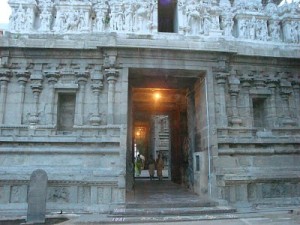
108 Upanishads | Vedanta Spiritual Library
Mess.166: A Holy Trip to Arunachaleshwara
http://taonews123.blogspot.com
ŚrÄ� VidyÄ� (also spelled „Shri Vidya“) is the name of a Hindu religious system devoted to the goddess LalitÄ� TripurasundarÄ� or simply TripurasundarÄ� (‚Beautiful Goddess of the Three Cities‘). According to British scholar Gavin Flood she is a tantric form of the goddess ŚrÄ� (also called LakṣmÄ�), consort of Vishnu. However, the late orthodox leader of the largest Samaya school of ŚrÄ� VidyÄ�, Sri Chandrasekharendra Saraswati Swamigal, says that the ŚrÄ� in ŚrÄ� VidyÄ� is a title of respect meaning The VidyÄ� and has no connotation to LakṣmÄ�. And Indian scholar V.R. Ramachandra Dikshitar states she is a form of Durga or Paravati, consort of Shiva , as well as several names from the LalitÄ� SahasranÄ�ma which call her the beloved of Shiva. The Sanskrit word vidyÄ� means „knowledge“ or „lore.“ A thousand names for this form of DevÄ� are recited in the LalitÄ� SahasranÄ�ma, which includes ŚrÄ� VidyÄ� concepts. Read More: > HERE <
The Sri Yantra (shown here in the three-dimensional projection known as Sri Meru Chakra or Maha Meru used mainly in rituals of the Srividya Shakta sects) is central to most Tantric forms of Shaktism.
Meru Chakras are frequently a central focus and ritual object for this worship of the Goddess. They are a more potent form of the Sri Yantra, since they are three-dimensional. Meru Chakras can be found in rock crystal and in metal, often a traditional panchaloha formula of silver, antimony, copper, zinc, and pewter, which enhances the flow and generation of Sri’s beneficial energies, covered in gold.
In the theology of the ŚrÄ� VidyÄ� the goddess is supreme, transcending the cosmos which is a manifestation of her. The school has an extensive literature of its own. The details of the beliefs vary in different texts, but the general principles are similar to those found in Kashmir Shaivism.
The goddess is worshipped in the form of a mystical diagram (Sanskrit: yantra) of nine intersecting triangles, called the śrÄ�cakra („Chakra of ŚrÄ�“) that is the central icon of the tradition.
SRI CHAKRA by S. SHANKARANARAYANAN – SRI CHAKRA, the king of chakras is a master plan of manifestation drawn by the divine Draughtsman on the board of the infinite, a transcript of the Transcendent, a symbol-image of the supernal verities. The spiritual and occult tradition of the worship of the Mother Goddess and the Sadhana of Srividhya are explained in sixteen chapters in terms of modern thought and understanding. Based on authentic and authoritative Tantric texts the exposition in English is inspiring and original, almost a classic in the field of esoteric literature.
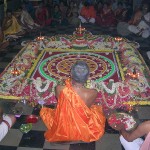
About the Author: Though his academic attainments are in Mathematics and his professional interests lie in a specialised field of industrial management, Sri S. Shankaranarayan has retained his first love for Sanskrit. In his childhood he was introduced to the ancient Sanskrit lore by his grandfather, Sri S. Narayana Iyer, who was himself a deep initiate in Sri Vidya, Later he came under the dynamic influence of Sri Kapali Sastriar. Shankaranarayanan cherishes a special regard for this tradition of the worship of the Divine Mother and his treatises on Devi Mahatmyam-both in Tamil and English have acquired an authenticity of their own. The present work on Sri Cakra, revealing as it does the depth of his scholarship, practical insight and occult knowledge, promises to be a classic on the subject. Endowed with luminous intellect, well-versed in the modes of esoteric worship and awake with an active spiritual aspiration, Shankaranarayanan is marked out to play a singular role in the resuscitation of the spiritual and occult tradition of India in terms of modern thought and understanding. -M. P. PANDIT
Buy the Book here: > www.exoticindiaart.com
- http://www.sriyantraresearch.com
- Ramana Maharshi – Sri Chakra Puja, every Friday <
- Meet International Vedanta Society, studies, friends at fb <
- Meet Kashmir Shaivism, friends and studies, at fb <
- Meet Shaktism „Doctrine of the Goddess“ at fb <
- Meet Hinduism, friends, fans, studies at fb <
- Meet Jivan Mukta, friends, studies at fb < (> Jivan Mukta <)
- Meet Prem Nirmal Holistic Counseling, studies, friends at fb <
- http://en.wikipedia.org/wiki/Flower_of_Life
YOGA, TREE AND OUR UNIVERSE
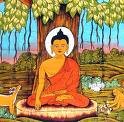
The Originar of Hatha-Yoga
Tree is the highest evolved form in plant kingdom. Man is the highest evolved species in Animal kingdom. Mushrooms are the best fungi visible on this planet. There is commonality of forms among all these highest evolved forms among different type of life-forms -Tree-like structure.Man is a cerebro-spinal being sheathed within a fleshy body. Most evolved form of cell is neuron that mediates consciousness is Tree-like structure. Surprisingly, most powerful thing that mankind achieved viz. atom bomb , produce Tree-like clouds after exploding on the surface.
Tree-like structure in Nature!
One can find out where else do Tree-like structure in nature exist. Pliny, the Younger linked the eruption of Vesuvius eruption in 79 A.D. with Italian umbrella pine. It is now an established scientific fact that the most powerfur process within earth, volcanic plumes that move inside earth is umbrella-shaped with a column & umbrella spinning about vertical axis( Tree-like). The most terrible force on the surface of the earth are the Tornados which are again Tree-like shapes with a column & an umbrella. Tree-like shape is found in other very powerful phenomena like lightening flashes, electric sparks, river delta, snowflakes, coral .
Tree-like structure is characteristics of every visceral system. Biologists trace this form in the mosses, lichens, shrubs, root system, mammalian lung bronchioles, cells of nervous system, veins & arteries forming cardio-vascular system. Wheresoever there are branching system, that invariably culminate in a Tree-like structure.
Tree & Fractal Geometry
In last fortnight, a brilliant paper was published in ‚Advances in Soft Computing“, under the title“Algorithms for Tree-like Structure Generation“ by Anna Romanowska, a neuro-anatomist et al. The team characterised Tree-like structure as that form which bifurcates but do not form any cycles. The team picked up the concepts of fractal geometry & fused with algorithms to create a Recurrent Algorithm. Self-similarity and repetition of sequence( iteration) is generated by a bifurcating cascade. The team concluded that if living system are generated recurrently, complex organic structures like roots, bronchial system in lungs emerge.
Now that an algorithm for Tree-like structure has been generated, it will be feasible in a decade to manufacture on mass scale silicon bronchial/ cardio-vascular/ neural system .
Before the advent of Fractal geometry by Benoit Mandelbrot during 1970s, the question of Tree-like structure had perturbed many a great minds. Hisao Honda of University of Kyoto published a paper on “ Description of the Form of Trees by the parameters of the Tree-like body“ in the Journal of Theoretical Biology, May, 1971. Honda concluded that Tree architecture maximizes flow access. He found stastitical similarity in living & non-living world, among branching in living system & geological & geophysical system.
- Meet Swami SIVANANDA friends, yoga, studies, at facebook <
- Meet Bhagavad Gita friends, yoga, studies at facebook <
- Meet Patanajali friends, yoga, studies at facebook <
- Meet Buddhism, friends, studies, Medicine at facebook <
- Meet Paramahansa Yogananda friends, groups, studies at fb <
- Meet Raja Yoga, Friends, Group, studies at facebook <
- Meet IYENGAR (B.K.S.), Yoga, Friends, Studies, Groups at fb<
- Meet Swami Vivekananda, Yoga, Studies, Friends, Groups at fb<
- Meet Bhagavad Gita, Yoga, Studies, Friends, Groups at fb <
- Meet Ramana Maharshi Groups, Friends, Studies, Fans at fb<
- Meet Hinduism, Groups, Friends at facebook <
- Meet Kashmir Hinduism, Studies, Friends at facebook <
- Meet Shaktism and Devi the Godess at facebook <
- Meet Saundaryalahari: Wave of Bliss by Shankaracharya at fb <
- Meet Arsha Vidya Gurukulam, Studies, Friends, Fans, at fb <
- Meet Advaita Vedanta,Groups,Studies, Vivekananda at fb <
- Meet Yogi Yogendra Nath, Studies about Goraksha at fb <
- Meet Jaya Kula and the three ways of Practicing tantra at fb <
- Meet VASTU, Friends, and Study Groups at facebook <
- Meet Jyotish, Friends, and Study Groups at facebook <
- Meet Sacred Geometry at facebook <
- READ MORE HERE:
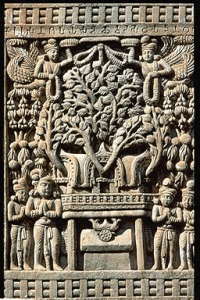
Morphic field & Morphic Resonance!
Tree-form is found in lower kingdom of Animal as well as Fungi. Jelly fishes or the polyp, these are invariably shaped like Trees. The colonies of proliferating marine organism replicate this form. It is interesting that jellyfishes which have no neurons & man with maximum neurons are essentially same in shape. Great Scottish biologist, Sir D’Arcy Thompson wrote in 1917 „On Growth and Form“, to analyse patterns & shapes in nature. His erudite tradition sd being carried by Rupert Sheldrake, a British biologist. He has done extensive work on the concept of morphic field & morphic resonance. By morphic resonance, he explains the influence of Like upon Like by which a connection among similar fields is established. He has shown in his work example of crystallization. It is very difficult to crystallize a new compound for the first time. Once it is done, a morphic field emerge. It is easier next time if someone does elsewhere in the world. There is a cumulative influence & it gets easier & easier to crystallize the compound. There is an accelerated rate of crystallization . Similarly, in learning among rats, this phenomena has been experimentally confirmed. It is difficult for a rat to pass through a maze for the first time. But, once a rat does this, another rat elsewhere does it much easily. And with each learning , there is spontaneous spread of new habits. For Sheldrake, evolutionary spread of new habit is not genetic but depends on a kind of collective memory due to morphic resonance.
This can be easily comprehended in case of human. It was very tough to manufacture clock or VCD or computer. More people are manufacturing, easier it is getting to manufacture. Watches, transistora & VCDs are now cottage industry. Who knows in future, robotics will emerge as similar kind of easily handled industry and there will be garages in every nook & corner of city to repair robots or even remodell robots by neighbourhood mechanic.
Sheldrake further proposes the concept of the „Memory of Nature“. Habits of nature depend on non-local similarity reinforcement. Through morphic resonance, the pattern of activity in self-organizing system are influenced by similar patterns in the past. He brings back the idea of Carl Jung‘ collective unconscious.
Examining Growth of Tree-Form!
I find the concept of morphic resonance appealing. That can explain this frequent recurrnce of similar pattern in nature. If we ponder over the shape of DNA & its future. The fluid around earth’s inner core creates a helical movement and generates magnetic field. The geodynamo of the earth is a self-replicating system that help explain the continuity of magnetism in earth’s core , otherwise it would have dissipated within 20,000 years. Now, the transformatory biological molecule,DNA, is helical as well as self-replicating. Within geo-physical processes, we know that Tree-like plumes are created. Now, this geophysical structure resonates throughout future evolution of biological world. For every plume within, there is a tornado on the surface. This first form of powerful process recurs at the level of the most developed categories at various levels, may it be fungi, or plants or animals or cells. And, that form recurs in even man-made powerful processes like atomic explosions.Upon visualizing this sequence, I can very well predict that the most successful biological robots or most efficient spaceship for planetary travels would have Tree-like architecture. Our Discovery spaceship is a poor materialization of that critical architecture.
Tree & bifurcation!
This Tree-like structure itself is generated by recurrent self-similarity which results due to behaviour of a dynamic system. Now, the chaos theorists have worked out very well that how in a dynamic system , a stage of crisis is set in and at the point , there are two possibilities for the system to transform. Sometimes, the system oscillates between two possibilities as found in certain chemical clocks extensively investigated by Nobal laureate Ilya Prigogine.Most of the times, the branches grow further and then bifurcate. This is iteration of self-similarity that later results into Tree-like structures.
If this kind of bifurcaing iteration is fundamental to our changing Reality which is dynamic, and there is morphic resonance, one can draw the contours of this phenomena of emergence of Tree-like structure at a higher level.
End of biological evolution!
The bifurcation, that determines DNA-replication to cell-division, has finally achieved its destiny in the biological world in the form of Human beings. We are the highest biological form and the biological evolution has now concluded. There is no further scope of biological evolution beyond us.Perfect biological bifurcating branching system has been achieved. Our lungs, our cardio-vascular system, neural system .. everything has emerged as mere consequence of cascading bifurcation. Surprisingly, we have greater number of most evolved cells viz. neurons (200 billions) which themselves replicate own form at macrolevel. The cerebro-spinal system is a magnified neuron. We are the only animal to walk on 2 legs. Penguins do perform but lack other binarities. We have two legs, two hands, two nostrils, two ears, two testicles, two mammary glands, two eyes, two kidneys, two hemispheres in brain, two atrium, two ventricles in heart, two excretory points, two lips, two jaws. Our thinking pattern is also binary. Our categories are in twos- good/bad, high/low,sacred/profasne, self/other… We donot yet understand that this duality in thought is rooted in hemispheric brain or in fractal geometry. There is no more bifurcation & branching possible in bodily architecture of human beings. This is the end-point of biological evolution. Now, mankind is on verge of developing biological robots & higher order machine consciousness therby imbuing consciousness to physical world bypassing the biological evolution. We are becoming the co-creator of the Universe as well as agent to accelerate self-consciousness of physical matter in the universe.
Trees are our cousin!
Now, the issue of Tree-like structure resonates into our collective psyche. Tree is the source of wisdom, healing, nourishment, power. Bible myth has Tree . Newton discovered moodern science sitting under an apple Tree. Buddha discovered non-theistic self-awareness sitting under a peepul Tree. In Tibetan tradition, powerful meditation requires visualizing Tree of lineage with various Gurus on different branches. These kind of visualization has transformative effect on our consciousness. In every culture, Tree occupies a significant position in rituals & mythology. We feel special feeling with Tree. Our romantic mood, our wisdom, contemplative mood, aesthetic mood.. orbit around physical & metaphoric Tree. Tree have power to transmit some kind of healing power to us. Tree are the source of healing body through fruits & herbal medicine . Tree heals our body, mind as well as soul, if any. The processes involved may be a kind of morphic reonance that vitalizes self-similar cardio-vascular, respiratory & neural system.Trees are our morphic cousins. We feel guilty & hurt when trees are cut or when those are under environmental threat.
Future?
One thing is certain. Future robots & spaceships which would be most efficient to survive would have Tree-like architecture. We would have very little to do with blooming of age of nanotechnology, biotechnology & Artificial intelligence. Successful creation of algorithm for Tree-like structure has made it more likely that artificial human organs can be manufactured at industrial level. When death will be conquered after successful download of Memories & large scale diffusion of bionics, We would have enough time to resonate with biological Trees in solitude & steer mankind towards a spiritual evolution as biological evolution from DNA-pathway has reached a dead end!
(Niraj,1.11.2009)
VEDA, TREE´s AND THE HOLY SCRIPTURES
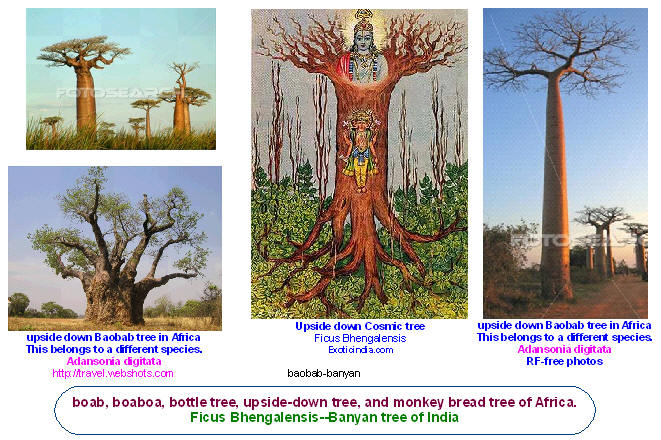
> Sanskrit Web / Yayurveda, Taithreeya Aryanka <
> BIHAR SCHOOL OF YOGA, SRI SIVANANDA MATH <
The Aranyakas/Wald Texte der Veden, (Sanskrit आरण्यक Ä�raṇyaka) are part of the Hindu śruti, the four Vedas; these religious texts were composed in Late Vedic Sanskrit typical of the Brahmanas and early Upanishads; indeed, they frequently form part of either the Brahmanas or the Upanishads. „Aranyaka“ (Ä�raṇyaka) means „belonging to the wilderness“ (araṇya), that is, as Taitt.Ar.2 says, „from where one cannot see the roofs of the settlement“. They contain Brahmana-style discussion of especially dangerous rituals such as the Mahavrata and Pravargya, and therefore had to be learned in the wilderness. They have also served as receptacles of later additions to the Vedic corpus. However, they have nothing to do, as later tradition has it, with Sannyasins or Vanaprasthas and they are not of „mystical“ nature but very close to the Brahmanas proper. Read More: > HERE <
The Taittiriya Upanishad is one of the older, „primary“ Upanishads commented upon by SHANKARA. It is associated with the Taittiriya school of the Yajurveda. It figures as number 7 in the Muktika canon of 108 Upanishads. It belongs to the Taittiriya recension of the Yajurveda and is constituted by the seventh, eighth and ninth chapters of Taittiriya Aranyaka.
The tenth chapter of the same Aranyaka is the Mahanarayana Upanishad. The Taittiriya Upanishad describes the various degrees of HAPPINESS enjoyed by the different beings in creation. Read More: > HERE <
Real Identity of Asvattham tree. It is called “Arasa Maram”
There is some confusion in books about the identity of Asvattham tree. It is called “Arasa Maram” (Ficus religiosa) in Tamil Nadu, Ravi-manu in Telugu, Aruli-mara in Canarese. One calls it a Palm tree; another calls it Pipal (Ficus religiosa-pagoda fig-tree); and yet another calls it Banyan Tree (Ficus Bhengalensis) with the adventitious aerial roots. Both (the latter two) are related to each other. It is a humongous tree with bright green leaves chatting with each other with a pat on the back as they rustle in the gush of wind. It is music to the ears. The breeze sets the leaves dancing in the wind and doing partial pirouette on their spindly petioles. When the wind quiets down, the song and dance stop suddenly.
One thing we know is that it is a cosmic tree. The berry of the Pipal is sweet, and Soma (intoxicant) is prepared from its juice according to some accounts. (There is another claim that says the soma juice comes from a mushroom.) Images of Pipal tree appear on the Harrapan seals. Asvattham is said to be a “body-tree.” “A” is no; “THA” is existence; “Shva” means “after tomorrow:” No existence after tomorrow. It tells us that life is precarious. The body tree itself is imperishable (HAM), because God pervades it.
The tree is rooted in heaven and since its aerial adventitious roots go down to anchor to the earth and Prakrti (matter), we are susceptible to the temptations of evil. The middle branches are the men and the sap that keeps flowing inside and sustaining the branches are the Gunas (modes). Cutting the branches and the aerial roots figuratively depicts transcending the gunas and a move to a higher plane― that of SannyÄ�si.
In Chinese lore, the body is compared to the Bodhi tree (Tree of Wisdom). Katha Upanishad 2.3.1: With the root above and branches below the fig tree stands: That is pure, That is Brahman, That is immortal. In It the world rests and no one goes beyond it. The upside down Tree of Life has roots in Brahman: The tree, the roots, the trunk, and the branches represent Manifest Brahman or the phenomenal world of Isvara, matter and beings.
Katha Upanishad describes Manifest Brahman as follows: He is self-born and first-born from the waters (Mula Prakrti, root cause or matter) by an act of meditation. He resides in the cave of the heart of beings and is immanent in all causes and effects. He who knows this knows the Absolute in Him. Verse 2.1.6
It goes on to describe the Mother Goddess. She is Aditi, the Boundless. She is born as Prana (Breath or life) from the Absolute genderless Brahman, the nameless, and the formless. She is the Devatamayi (Mother of gods) and the soul of all beings. She stands in the inner recess of the heart. Verse 2.1.7
The Buddha attained enlightenment under the Bo tree; Bo is short for bo-gaha, tree of wisdom; Bo tree is Pipal or Banyan tree; Bo is wisdom, Bodhi is enlightenment, Buddhi is knowledge and the Buddha is he who attained enlightenment. Bodhisattva is potential Buddha meaning that the aspirant has wisdom (enlightenment) and virtue (Bodhi + Sattva).
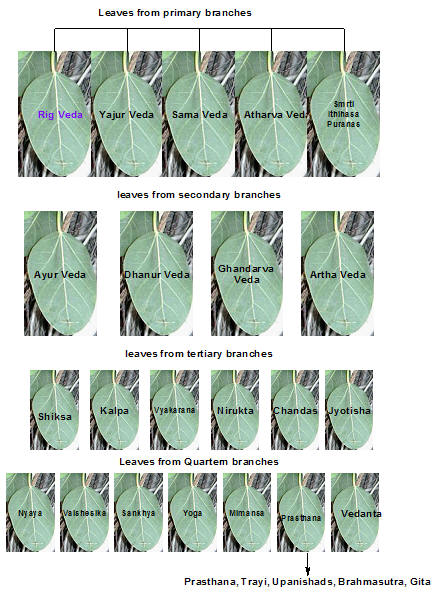
Krishna states that He is Asvattha tree among trees. Jesus Christ says that he is the true vine. It appears the trees have souls from what Lord Krishna and Jesus Christ say. Why are we cutting them indiscriminately and depleting our forests?
Sage Narada cursed the two sons of Kubera to become trees for knowingly playing naked in the shoal of a river with Ghandarva women. (You thought that having a shower mate is a modern phenomenon: not so from what you read here.) The young women in a turn of modesty put on their clothes while the Kubera’s sons ignored the sage, who cursed them to become trees for their feral nature, arrogance, insolence, and ignorance; Krishna released their souls and bodies after one hundred divine years by uprooting the trees.
Krishna drank water from River Sarasvati, sat, and meditated under Asvattha (Pipal) tree in a reclining position, before his departure to Goloka, Bhagavata Purana 3.4.3 and 8. River Sarasvati went dry before 1900 B.C. At present Sarasvati River features as a pentimento from satellite earth images.
Mantra Pushpam – Vedic Hymns
This mantra is from Taithreeya Aranyakam of Yajur Veda
Asva, meaning horse, is the root word for Asvattha, the tree; Asvamedha, horse sacrifice; Asvatthaman, he who cried like a horse at birth; Asvatthaman, the elephant; Asvini, the wife of Asvins, who took the form of a mare; and Asvinikumaras, the sons of Asvini-the sons of a mare. Asvattha tree gained such name because people used the tree’s shade as shelter for horses. Professor Bokonyi of Hungary an expert in the anatomy of horses tells that the true horses were present in Kutch area during the late Harappan period. The Aryans migrated from India in several waves to Iran to Caucasus riding on the horses as early as 4000 B.C. Rg Vedic civilization was before 5000 B.C. Indo-European languages have loan words like Aspa, Aihva, aszva, aspa, asa, iss, issi, issia, assa, sisu, equus. Where did they originate from? Yes, from Sanskrit. Let us look at another view. Domestication of horse: the credit goes to Akkadians; that is one view. The majority opinion is that the Indo-Aryan was the first domesticator of the horses. They wrote the first manuals for horse training.
Between 2000 B.C. and 1700 B.C. the Aryans (the late comers) in Babylon domesticated the horses which were then called the ass of the East. The horse was later introduced in Egypt before 1580 B.C. The Aryan victory march was attributed to tamed fast horses and chariots.
Sri Swami Satyananda Saraswati calls this tree The Mystical Tree. He says that this imperishable tree has roots above and branches below. The human body, according to him, resembles the upside-down tree in that the brain forms the root structure; the spinal column, the tree trunk; and the leaves, the thoughts, emotions and distractions. The occult truth and the secret knowledge of the Mystical Tree cannot be understood until the aspirant gets spiritual awakening.
Let me touch upon the significance of tree in Christianity. As you see Krishna’s image on the cosmic tree, it reminds us of Jesus Christ on Holy Rood, the tree of immortal life, and he is himself the fruit of the tree. Jesus on the cross, the Buddha under the tree, and Krishna on the cosmic tree–my interpolation, are the same figures. Page 107 The Power of Myth, by Joseph Campbell. Joseph Campbell, the universal man, sees oneness in Jesus Christ and the Buddha. Campbell is one among the rarest of breeds who knows the essence of (a generic) religion. He can see through the apparent differences among the religions and find the common Truth.
15.2: Its branches extend downwards and upwards nourished by Gunas, with sense objects as shoots or sprouts; and its roots extend downwards to the world of men, bound to karma.
The tree has many adventitious roots, coming down from the tree branches; the wider the tree grows the more adventitious roots there are. These adventitious roots, compared to ego, ignorance and vasanas supporting the heavy branches grow down, while the cosmic roots of the tree trunk grow towards heaven and anchor in Brahman. The lower branches are synonymous with human beings, animals, birds, reptiles, worms, insects, and insentient and immovable matter. The upper branches are comparable to Ghandarvas, yaksas, gods, and goddesses.
The sap of Gunas nourishes the branches, the product of Prakrti; the sap flowing through the upper branches contains Sattva (goodness and virtue), while that of the lower branches comparable to animals, contains Tamas (ignorance and delusion). The middle branches are the men with varying combinations of the Gunas and thrive by the sap of Sattva, Rajas, and Tamas in varying combinations. The adventitious roots of the middle and lower branches represent bondage of the human beings and animals. The lateral branches are the sense objects, namely sound, vision, smell, taste, and touch; the growing ends of lateral branches are the ears, eyes, nose, mouth, and skin; the leaves representing the Vedas reach for the sun and illumination from God.
The adventitious roots originate from branches, which draw nourishment from Gunas: they are extensions of these branches and therefore of the gunas, which are responsible for the way men behave. The adventitious roots or the gunas anchor to Prakrti and bind the jivatma to karma and therefore to Sams�ra. In this world of beings, man has the most opportunity to advance to a higher state, fall to lower state, or remain in the same state. The animals are born in the lower state because they have to resolve the pr�rabda (past) karma inherited from the past life; they do not accumulate new karma in the present life because their acts are commensurate with their animal traits; and they are incapable of making informed choice from Sattva, Rajas, or Tamas. But, man on the other hand can accumulate new karma because he can choose his (thought), word, and deed.
Krishna in his discourse in The Uddhava Gita, Dialogue 7.21-7.24 describes the Tree of Life. (based on translation by Swami Saraswati.)
The tree of Samsara bears flowers and fruits; good and bad deeds are its seeds; desires are its deep roots; Sattva, Rajas, and Tamas are its support; earth, water, fire, air, and ether are its five secondary branches through which five kinds of sap (smell, taste, sight, touch and hearing) flow. The five branches fork into ten branches: five motor organs, five sensory organs plus the mind. Two birds (The Supreme One and Ahamkara) live in their nests in the branches. The bark has three layers, the three humors of the body: wind, bile and phlegm. The tree bears two fruits: joy and sorrow. Some eat the fruit of sorrow; some on right path eat the fruit of joy. Krishna tells Uddhava to cut down the tree and free the Self, identifying himself with the Self.
15.3: Neither its form nor its end nor its beginning nor its support is seen. Having cut this firm-rooted Asvattham tree by the strong weapon of detachment…
15.4: Thereafter, seek out that goal, attaining which one does not return again. Surrender to the (first and) Primal Person from whom the ancient manifestation comes forth.
We have to cut the adventitious roots to prevent lowermost branches from getting the sap of Tamas (darkness and delusion); then we have to cut the adventitious roots, which supply the Rajas sap (motion and passion) to the middle branches; now we are left with the upper branches (and their adventitious roots), whose sap is Sattva (goodness, virtue, and calmness). To attain to Brahman, we have to transcend all three Gunas and therefore have to cut the tree, roots, and all. The tree represents the nonself or Prakrti, and we have to separate the Jiv�tman from Prakrti, so it merges with the Higher Self.
Let me explain what attaining to Brahman means. It points to a certain quality of life and behavior. It is simply not having the didactic knowledge of the Holy Scriptures; it is not simply the rituals alone. Dharma, duty; sama, equanimity; dama, self-control; vairÄ�gya, indifference to worldly objects; uparati, desisting from sensual enjoyment; sraddhÄ�, faithfulness; and atha, “much more or more over,” (auspiciousness, authority, flair and divine grace) are the preconditions for reaching Brahman. The fit person is the one who knows his Vedas, has the attributes (described above), and is devoted to the Lord only and detached from the world.
- Dharma
- Sama
- Dama
- Vair�gya
- Uparati
- Sraddh�
- Atha
- Duty
- Equanimity
- Self-control
- Desirelessness
- Abstinence
- Faithfulness
SraddhÄ� is implicit faith in Hindu Holy Scriptures. “Atha” has no English equivalent and means “much more” or “more over” meaning auspiciousness, authority, flair, and divine grace.
15.5: The wise ones, without false pride and delusion, having vanquished the evil of attachment, eternally devoted to the Supreme Self, divorced from passion (KÄ�mÄ�h), free from dualities of HAPPINESS and distress, and delusion, reach the eternal state. ( Suka and Dukha = þýÀõ (Inbam) and ÐýÀõ (Thunbham) = HAPPINESS and distress.)
- FULL ARTICLE with reference to horses, veda <
- Bhagavad Gita & the President’s remarks at the Nobel Peace Prize ceremony Oslo.
- ARTICLES, DEIN AYURVEDA NET:
- The Holy Bodhi Tree
- The mystical tree – In the Bhagavad Gita
- The Baobab Tree, Africa´s Medicine, Social Project
- Brihad Aryanka Upanishad and Stars
- Brihad Aryanka Upanishad and Trees
- Yoga, Ayurveda und Siddha Medizin
- Ashtanga Yoga and the Tanthram Tree
- Veda, Smriti and Sruti
- Gunas im Ayurveda und Yoga, Grundprinzipien
- Adi Shankara, Books, Arts, Studies
- YOGA LITERATUR ÜBERSICHT
SRI ADI SANKARA, Yoga, Books, Arts, Studies
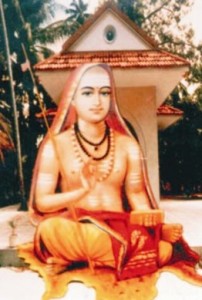
> KAMAKOTI PEETHAM (founded pers. by Sri Sankara) <
> SRI SANKARA UNIVERSITY OF SANSKRIT <
> The Biography by Swami SIVANANDA <
> BHAGAVAD-GITA, commentary of Sri Sankaracharya (1901) <
> KAMAKOTI Go Green Solar Power Project <
Adi Shankara ( DevanÄ�garÄ�: आदि शङ्कर, Ä�di Śaṅkara, pronounced [aːdi ɕaŋkərə]); (788 CE – 820 CE), also known as Śaṅkara BhagavatpÄ�dÄ�cÄ�rya and Ä�di ŚaṅkarÄ�cÄ�rya, was an Indian philosopher who consolidated the doctrine of Advaita Vedanta, a sub-school of Vedanta. His teachings are based on the unity of the soul and Brahman, in which Brahman is viewed as without attributes. He hailed from Kalady of present day Kerala. Shankara travelled across India and other parts of South Asia to propagate his philosophy through discourses and debates with other thinkers. He founded four mathas („monasteries“), which helped in the historical development, revival and spread of Advaita Vedanta. Adi Shankara is believed to be the organizer of the Dashanami monastic order and the founder of the Shanmata tradition of worship.
His works in Sanskrit, all of which are extant today, concern themselves with establishing the doctrine of Advaita (Nondualism). He also established the importance of monastic life as sanctioned in the Upanishads and Brahma Sutra, in a time when the Mimamsa school established strict ritualism and ridiculed monasticism. Shankara relied entirely on the Upanishads for reference concerning Brahman and wrote copious commentaries on the Vedic Canon (Brahma Sutra, Principal Upanishads and Bhagavadgita) in support of his thesis.
The main opponent in his work is the Mimamsa school of thought, though he also offers some arguments against the views of some other schools like Samkhya and certain schools of BUDDHISM that he was familiar with. Read More: > HERE <
Scholastische Phase des Yoga
Diese Phase beginnt mit Shankaracharya (788-820 n. Chr.), der den Vedanta systematisierte und die besten Teile von Samkhya, Yoga und Buddhismus in den Vedanta integrierte. Nach ihm kamen andere Lehrer, die das Prasthana-Trayam anders verstanden, und konkurrierende Vedanta-Schulen gründeten. Advaita-Vedanta – diese von Shankara vertretene Auslegung sieht alle wahrgenommenen Unterschiede der phänomenalen Welt als unwirklich an. Alles was existiert ist nichts anderes als Brahman; doch Brahman hat keine Teile oder Unterschiede in sich. Die wahrgenommenen Unterschiede sind wie eine Fata Morgana. Mehr Lesen/Read More: > Here <
Adi Sankaracharya’s Soundarya Lahari, Translated by P. R. Ramachander: Introduction: Soundarya Lahari meaning waves of beauty consists of two parts viz. Ananda Lahari meaning waves of happiness (first 41 stanzas) and Soundarya Lahari(the next 59 stanzas). It is believed that Lord Ganesha himself has etched the Ananda Lahari on Mount Meru(Some people believe that Sage Pushpa Dhantha did the etching).
It was read from there by Sage Gouda Pada who taught it to Adhi Sankara. Adhi Sankara himself added the rest of the 59 stanzas and completed it.
These 100 stanzas are supposed to be the foremost among Manthra literature. It is also believed that by Making suitable Yanthras ( in west also known as „mandalas…“) and reciting particular stanzas and worshipping the yantras almost anything can be obtained in the world .
- Download at VEDANTA BHERI : >HERE <
- HYMNS ON SANKARA at bhagavadgitausa: >HERE<
- A new light on Adi Sankara, : > HINDU ON NET <,
- HINDU ON NET: > Soundarya Lahari chanting in Bangalore <
- Sankara im Deutschen > Kirchen Lexikon <
There are more than 36 commentries to Soundarya Lahari written in Sanskrit itself. Of them the most famous is that written by Lakshmi Dhara alias Lalla, His commentary is used to understand the meaning of the different verses. Though there are large number of translations and commentaries of Soundraya Lahari available this is perhaps the first time an attempt is made by a mere novice to translate them in to English verse. The aim is to bring to the notice of the devotes who know English better than other languages , the majesty of the medium of worship called >Soundarya Lahari<. A transliteration in roman script is also given. May all those who read this be drenched forever by this “Wave of happiness”.
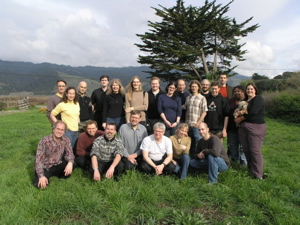
The Internet Archive San Francisco:
The Internet Archive is a 501(c)(3) non-profit that was founded to build an Internet library. Its purposes include offering permanent access for researchers, historians, scholars, people with disabilities, and the general public to historical collections that exist in digital format. Founded in 1996 and located in San Francisco, the Archive has been receiving data donations from Alexa Internet and others. In late 1999, the organization started to grow to include more well-rounded collections.
Now the Internet Archive includes texts, audio, moving images, and software as well as archived web pages in our collections, and is working to provide specialized services relating to training, education, or adaptive reading or information access needs of blind or other persons with disabilities.
Extraordinary Personalities Reflect On The Bhagavad-Gita: > HERE <
Albert Einstein, Mahatma Gandhi, Dr. Albert Schweizer, Aurobindo, Carl Jung, Prime Minister Nehru, Herman Hesse, Vivekananda, Ralph Waldo Emerson, Paramahamsa Yogananda, Rudolph Steiner, Adi Shankara, Aldous Huxley, Ramanuja, Bhaktisiddhanta Saraswati Srila Prabhupada, Baladeva Vidyabhusana, Madhvacarya, and Sri Caitanya Mahaprabhu.
Bhaja Govindam is a very popular 8th century Hindu devotional composition in Sanskrit composed by Adi Shankaracharya. This work of Adi Shankara underscores the view that devotion to God, Govinda, is a vastly important part of general spirituality. This work is generally considered a good summary of Advaita Vedanta.
It is said that Shankara was walking along a street in Varanasi one day, accompanied by his disciples. He heard an old scholar teaching his grammatical rules. Taking pity on him, he went up and advised him not to waste his time on grammar at his age but to turn his mind to God in worship and adoration. The Hymn to Govinda was composed on this occasion. Besides the refrain of the song beginning with the words „Bhaja Govindam“, Shankara is said to have sung twelve verses, hence the hymn bears the title „Dvadasamanjarika-Stotra“ (A hymn which is a bunch of twelve verse-blossoms). The fourteen disciples who were with the Master then are believed to have added one verse each. These fourteen verses are together called „Chaturdasa-manjarika-Stotra“ (A hymn which is a bunch of fourteen verse-blossoms).
The refrain „Bhaja Govindam“ which defines the composition and gives it its name invokes the almighty in the aspect of Vishnu; it is therefore very popular not only with Sri Adi Shankaracharya’s immediate followers, the Smarthas, but also with Vaishnavas and others. There is a story attached to the composition of this Hymn. Please Note: Being a lady > M.S.Subbalakshmi < omitted few verse which are not included in this application.
LORD SIVA AND HIS WORSHIP BY SRI SWAMI SIVANANDA:
DIE VEDEN & AYURVEDA, EIN ÜBERBLICK
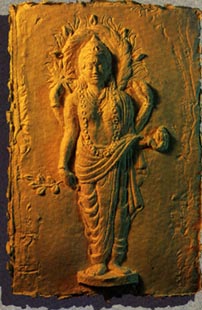
> CHARAKA SCHOOL OF AYURVEDA <
> AYURVEDA & CHARAKA SAMHITA <
>> Books from „Kenneth G. Zysk“ <<
Ayurveda (DevanÄ�garÄ�: आयुर्वेद, the ’science of life‘) is a system of traditional medicine native to India and practiced in other parts of the world as a form of alternative medicine. In Sanskrit, the word Ayurveda consists of the words Ä�yus, meaning ‚life‘, and veda, meaning ‚related to knowledge‘ or ’science‘. Evolving throughout its history, Ayurveda remains an influential system of medicine in South Asia. The earliest literature of Ayurveda appeared during the Vedic period in India. The Sushruta Samhita and the Charaka Samhita were influential works on traditional medicine during this era. Ayurvedic practitioners also identified a number of medicinal preparations and surgical procedures for curing various ailments and diseases. Ayurveda traces its origins to the Vedas—the Atharvaveda in particular—and is connected to Hindu religion.The Sushruta Samhita of Sushruta appeared during the 1st millennium BC.
Ayurveda, Rishis, die 4 VEDEN (Rgveda, Samaveda, Yajurveda, Arthavaveda) und deren Entstehung:
Der Begriff Ä�yurveda ist ein Wort aus dem Sanskrit, der altindischen Hochsprache, und heißt einfach übersetzt „Wissenschaft vom Leben“ oder „Wissen von der Lebensspanne“. Durch diese Bezeichnung versteht sich, dass im Ä�yurveda nicht nur Krankheiten behandelt werden. Als „Wissenschaft vom Leben“ hat Ä�yurveda ein zweifaches Ziel.
> Dein Ayurveda Net ….. “ Ayurveda “ <
> Meet Pentavox Herbals, Ayurveda (Biggest Ayurveda Group on fb) <
> Meet many Ayurveda Groups and Friends at facebook <
> Meet Dhanvanthari Groups and Friends at facebook <
> Meet NaturalNews.com at facebook <
NaturalNews.com is an independent news resource that covers the natural health and wellness topics that empower individuals to make positive changes in their personal health. NaturalNews offers uncensored news that allows for healthier choice.
RABINDRANATH TAGORE & AMARTYA SEN.
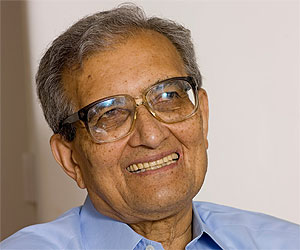
> AMARTYA SEN. & VISVA-BHARATI UNIVERSITY <
A central university and an institution of national importance
Rabindranath Tagore (Bengali: রবীন্দ্রনাথ ঠাকুর) (May 1861 – 7 August 1941), sobriquet Gurudev, was a Bengali polymath. As a poet, novelist, musician, and playwright, he reshaped Bengali literature and music in the late 19th and early 20th centuries. As author of Gitanjali and its „profoundly sensitive, fresh and beautiful verse“, he became Asia’s first Nobel laureate by winning the 1913 Nobel Prize in Literature.
A Pirali Brahmin from Calcutta, Tagore wrote poems at age eight. At age sixteen, he published his first substantial poetry under the pseudonym Bhanushingho („Sun Lion“) and wrote his first short stories and dramas in 1877. Tagore denounced the British Raj and supported the Indian Independence Movement. His efforts endure in his vast canon and in the institution he founded, Visva-Bharati University.
THE ARTS OF HARISH JOHARI
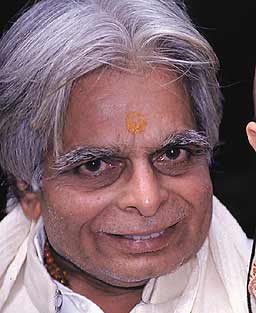
> HARISH´s AYURVEDA BOOKS & ARTS <
Harish Johari (1934-1999) was a distinguished North Indian author, Tantric scholar, poet,musician, composer, artist, and gemologist who held degrees in philosophy and literature and made it his life’s work to introduce the culture of his homeland to the West.
Breath, Mind, and Consciousness
YOGA, by the puplisher
Modern scientists are just now beginning to understand what yogis have known for centuries–that the life force animating our physical bodies is regulated by breath, and that the breath energy is controlled by the mind. The esoteric and practical science of Swar Yoga >–presented in this book for the first time in English–< teaches conscious observation and control of breathing patterns to maximize energy and vitality.
Tantric Scholar and author of Tools for Tantra, Chakras, and The Healing Power of Gemstones, HARISH JOHARI brings an in-depth knowledge of ancient Hindu sciences to this discussion of breath and the yoga of balanced living.
His is the first guidebook for Westerners to offer a comprehensive treatment of the subject, providing information from Sanskrit texts otherwise unavailable in the English Language. He explains the sensory network of the nose and its effect on the subtle channels of energy throughout the body, showing the direct link between the practice of conscious breathing and the electrochemical balance of the brain and nervous system. He also shows how the breath, alternating between left and right nostrils, is influenced by solar and lunar forces and how one can attune to these natural rhythms and universal laws for greater health and well-being.
SWARA YOGA, the ancient art of breathing
Johari’s mastery of > Swara Yoga < techniques is apparent in the broad scope of Breath, Mind and Consciousness: included are a discussion of the phases of the five elements in the breathing cycle, exercises for physical and psychic healing, the means for determining which nostril is active, and instructions for conceiving a son or a daughter.
While continuing his lifetime study and practice of tantra, HARISH JOHARI is a painter, sculptor, gemologist, and composer of Indian music.
The word SWARA in Sanskrit, means sound or musical note; it also means the continuous flow of air through one nostril. And we all know that YOGA means union. So Swara Yoga is the science which is about the realization of cosmic consciousness, through the awareness or observation, then control or manipulation of the flow of breath in the nostrils.
Swara yoga is an ancient tantric science which involves the systematic study of the breath flow through the nostrils (or swara) in relation to the prevailing phases of the moon, time of day and direction . Although we think of ‚pranayama‘ when we think of techniques associated with the breath, in Swara yoga, it is the association of the breath in relation to the activities or phases or positions of the sun, moon, planets, seasons, time of day, with the physical and mental conditions of the individual and then taking the appropriate action according to these subtle relations. For example, knowing the moon phases and checking the flow of your nostrils before you get out of bed in the morning and letting the corresponding foot be the first to touch the floor and make the first step, is a simple practice that ensures success in everything that happens for that day. The first foot to touch the ground will get the prevailing ’successful‘ flow of energy from the cosmos.
> Meet SWARA Group at facebook <
> Meet over 200 Frida Kahlo Groups and Frida Kahlo Fans (184.298) <
YOGALEHRER IM HINDUISMUS
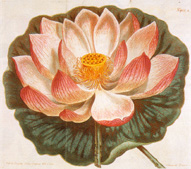
YOGALEHRER IN INDIEN
oder: “ YOGI in INDIEN „
Mit insgesamt 390 Versen stellt die Yoga-Shikha („Krone des Yoga“)-Upanishad die umfassendste Yoga-Upanishad dar. Sie besteht aus sechs Kapiteln, deren letztes einmal eine selbstständige Abhandlung gewesen zu sein scheint. Dieses > Shaiva-Werk < soll, ähnlich wie die > TANTRAS <, den spirituellen Suchern dienen, die mit den Schwierigkeiten des dunklen Zeitalters (kali-yuga) zu kämpfen haben.
